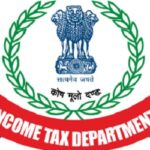The Income Tax Return (ITR) filing season for the Assessment Year (AY) 2025-26, which corresponds to income earned during the Financial Year (FY) 2024-25, is about to begin. Filing your ITR is an important annual task that helps you stay tax-compliant and avoid penalties. Whether you’re a salaried person, a business owner, or a professional, it is important to understand what documents you need and which tax regime is better suited for your income.
In this guide, we explain everything in simple words, starting from ITR forms, documents needed, new tax updates, and a clear comparison of the old and new tax regimes. So, if you’re wondering how to start your tax filing for this year, read on.
ITR Filing for AY 2025-26: Overview
The Income Tax Department has already notified the ITR forms for AY 2025-26, covering income from April 1, 2024, to March 31, 2025. Usually, ITR filing starts on April 1 every year. However, this year it has been delayed and is expected to start in June 2025.
Key Deadlines:
- July 31, 2025: Last date to file ITR for individuals who do not require a tax audit.
- October 31, 2025: Last date for businesses or professionals whose accounts need to be audited.
Applicable ITR Forms for AY 2025-26
Different people need to file different ITR forms depending on their income type. Here’s a simple breakdown:
1. ITR-1 (Sahaj)
- For resident individuals with:
- Income up to ₹50 lakh
- Salary income
- Income from one house property
- Other income (like interest)
- Agricultural income up to ₹5,000
2. ITR-2
- For individuals and Hindu Undivided Families (HUFs) who:
- Have income from capital gains
- Own more than one house property
- Do not have income from business or profession
3. ITR-3
- For individuals and HUFs with business or professional income
- Also includes partners in a firm
4. ITR-4 (Sugam)
- For individuals, HUFs, and firms (except LLPs) with:
- Presumptive income from business or profession
- Total income up to ₹50 lakh
5. ITR-5, ITR-6, ITR-7
- For companies, LLPs, trusts, associations, and other entities
Documents Required for ITR Filing (AY 2025-26)
You should collect all relevant documents before filing your return. These help you calculate your income accurately and claim deductions if applicable.
For Salaried Individuals:
- PAN Card: A must-have for filing your return.
- Aadhaar Card: Required for identity verification.
- Form 16: Issued by your employer, shows your salary and TDS details.
- Form 16A: Shows TDS on other income like interest (if applicable).
- Form 26AS: A tax credit statement showing TDS, advance tax, and self-assessment tax paid.
- Bank Statements: Especially to calculate savings account interest and other credits.
- Interest Certificates: From banks or post office—used to report interest earned on deposits.
- Investment Proofs: Documents for claiming deductions under:
- Section 80C (LIC, PPF, ELSS, etc.)
- Section 80D (Health insurance)
- Section 80G (Donations)
- Home Loan Certificate: Shows principal and interest paid, helpful for claiming deductions.
- Capital Gains Statement: If you sold stocks, mutual funds, or property.
For Business or Professional Income:
- Books of Accounts: Profit & Loss Account and Balance Sheet.
- Audit Reports: Form 3CB and 3CD if audit is applicable.
- Details of Income and Expenses: Related to your profession or business.
- TDS Certificates: For tax deducted on contract or professional income.
- Bank Statements: Especially business account statements.
Additional Documents:
- Previous year’s ITR copy (for reference)
- Rent receipts (if claiming HRA)
- Foreign income proofs (if applicable)
- Details of exempt income (like dividends, gifts, or agricultural income)
Old Tax Regime – Income Tax Slabs
For Individuals Below 60 Years (including HUF, AOP, BOI):
| Income Range | Tax Rate |
| Up to ₹2.5 lakh | Nil |
| ₹2.5 lakh – ₹5 lakh | 5% |
| ₹5 lakh – ₹10 lakh | 20% |
| Above ₹10 lakh | 30% |
For Senior Citizens (60 to 79 years):
| Income Range | Tax Rate |
| Up to ₹3 lakh | Nil |
| ₹3 lakh – ₹5 lakh | 5% |
| ₹5 lakh – ₹10 lakh | 20% |
| Above ₹10 lakh |
For Super Senior Citizens (80 years and above):
| Income Range | Tax Rate |
| Up to ₹5 lakh | Nil |
| ₹5 lakh – ₹10 lakh | 20% |
| Above ₹10 lakh | 30% |
New Tax Regime – Income Tax Slabs (FY 2024–25 / AY 2025–26)
| Income Range | Tax Rate |
| Up to ₹3 lakh | Nil |
| ₹3 lakh – ₹6 lakh | 5% |
| ₹6 lakh – ₹9 lakh | 10% |
| ₹9 lakh – ₹12 lakh | 15% |
| ₹12 lakh – ₹15 lakh | 20% |
| Above ₹15 lakh | 30% |
Deductions and Exemptions Not Allowed under New Regime:
- Section 80C (Investments like LIC, PPF, ELSS, etc.)
- Section 80D (Health Insurance Premium)
- HRA, LTA, Home Loan Interest (Section 24b)
- Other deductions under Chapter VI-A (except certain ones like employer’s contribution to NPS)
However, some deductions still allowed:
- Employer’s contribution to NPS (Section 80CCD(2))
- Standard Deduction
Who Should Choose the New Tax Regime?
The new tax regime is suitable for:
- Individuals who do not have many deductions or exemptions to claim.
- Those who prefer simplified tax filing and lower tax rates.







